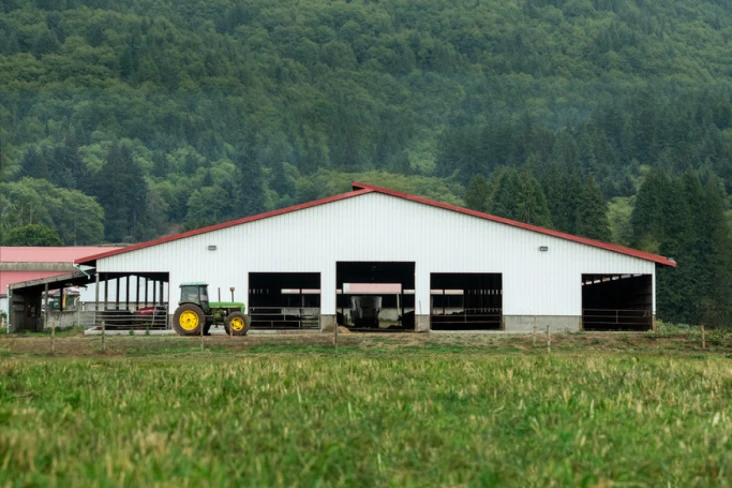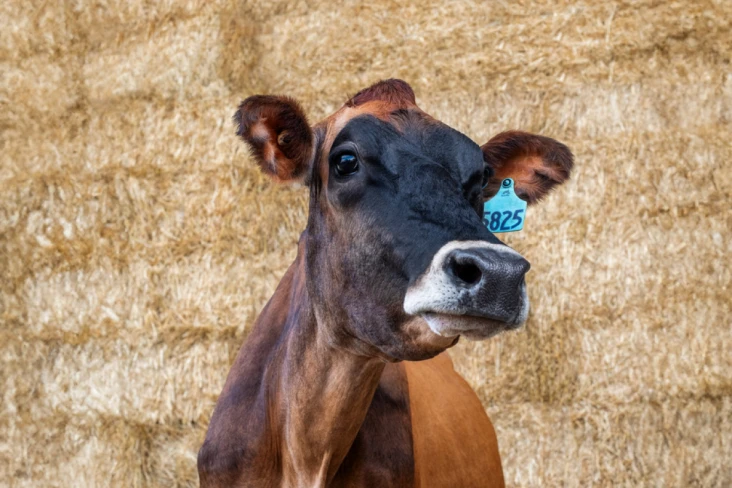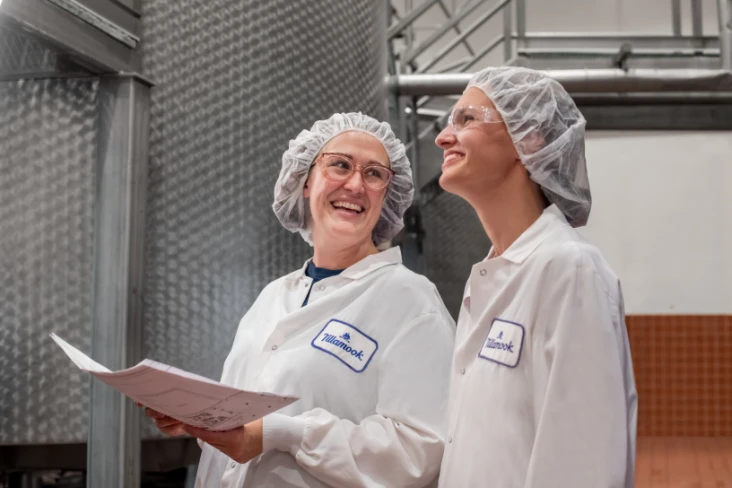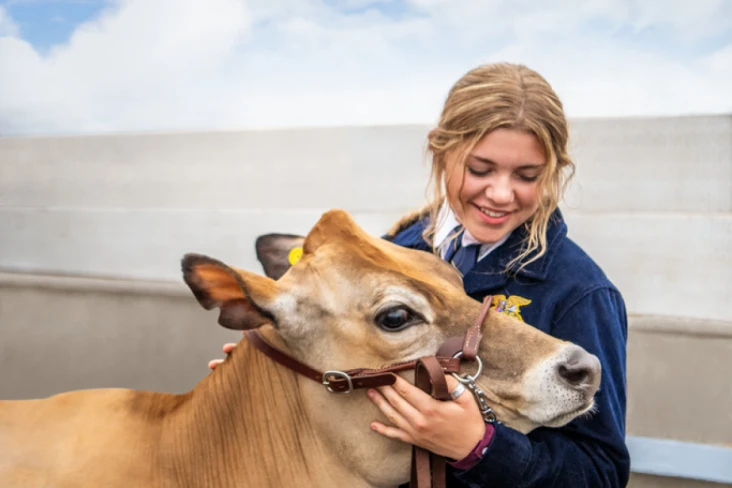2021 GLOBAL REPORTING INITIATIVE ISSUE BRIEF
At Tillamook County Creamery Association (TCCA), we recognize our obligation to protect the resources that sustain us. It is not just our responsibility; it is our heritage. We rely heavily on the local bodies of water to support our farmer-owners and our facilities.
According to the World Resources Institute Aqueduct Water Risk Atlas, both our Tillamook and Boardman manufacturing facilities are in areas of low water risk. In Tillamook County, water is not a constrained resource. There are seven major rivers (Kilchis, Miami, Nehalem, Nestucca, Tillamook, Trask, and Wilson) that flow into three bays (Nehalem, Nestucca and Tillamook), and average precipitation is 87.99 inches per year. In Morrow County, though the region is more arid, water is still readily available and inexpensive.
For these reasons, we chose to focus our water stewardship efforts on water quality over water consumption. We want to ensure that all water leaving our facilities is as clean as the water entering. To date, we have been challenged by organic loading into our wastewater treatment plant in Tillamook; production rates continue to increase as we grow our business, and our infrastructure inevitably continues to age. We have made significant investments in our wastewater treatment plant to properly manage and treat our effluent, and we must continue to monitor this closely to meet industry standards.
We remain committed to preventive and proactive actions to care for the long-term health and viability of the watershed. And, we are also working hard to establish a line of sight into our supply chain to ask that our business partners do the same.
“The TCCA brand will be associated with water quality due to agriculture. TCAA needs to be sure farmers have adequate water management plans.” -Erin Fitzgerald, Chief Executive Officer, Ranchers Alliance
Stewardship Charter: At TCCA, we uphold our tradition of doing things right by committing to a business model rooted in Stewardship. In 2017, we established a board-approved, third-party reviewed Stewardship Charter that defines our vision and our framework. Our Charter is centered on commitments to six key stakeholders, which encompass the issues most important to our business: Thriving Farms, Healthful Cows, Inspired Consumers, Enduring Ecosystems, Fulfilled Employees and Enriched Communities.
We use our Stewardship Charter as the anchor of our Stewardship Management System; that is, we have policies, procedures, documentation, measurement and communication, which cascade from the Stewardship Charter and guide our decision making. Adopting a management system like this is intentional—it ensures we embed our Stewardship commitments across all business functions, not just within our Stewardship Team. It also holds us accountable to our farmers, consumers, suppliers, employees, customers and neighbors. Upholding our Stewardship Charter is one of our five company shared values and one of our four company objectives, our time-bound goals.
One of our Stewardship Charter commitments is to Enduring Ecosystems. As part of our commitment to Enduring Ecosystems, we strive to minimize water consumption, where possible, and improve water quality across the board.
Baseline Analysis: We partnered with The Freshwater Trust (TFT) to conduct a comprehensive evaluation of the Tillamook Bay watershed in order to identify hot spot areas for poor water quality. TFT helped us to establish a baseline year for key indicators of watershed health, upon which we can measure any improvement or decline in ecosystem health. Watershed health indicators included: salmon habitat, sediment, nutrient and bacteria quantity, stream temperatures and wetland health. By initiating and funding this study, we have a better understanding of our relationship with and impact upon the surrounding water bodies.
Now, we are working with TFT to create a prioritized list of water conservation actions that would accelerate the scale and effectiveness of water quality efforts in the Tillamook and Nestucca Basins. Our intent is to minimize any negative impacts from TCCA lands on river and bay health, by prioritizing agricultural buffers, biodigesters, cover cropping, exclusion fencing for livestock, riparian vegetation restoration and manure tank covers.
Water Stewardship Grants: Every year, we allocate up to $25,000 towards environmental grants for our farmer-owners. Historically, these grants have supported streamside restoration projects, removal of non-native vegetation and the planting of native vegetation. Going forward, we will use these funds to support environmental efforts on farms more broadly, including research on best management practices and new technologies.
Key Players: We have established a team of experts to ensure compliance with internal policies, government regulations and industry best practices that pertain to water stewardship.
Our Field Services Team works collaboratively with our farmer-owners to ensure farmers are implementing best management practices (BMP) to protect adjacent waterways. They provide the financial, technical and social assistance necessary to uphold these practices. In addition, all farmers are required to assess nutrient loading and describe manure management strategies that protect water quality through Oregon’s Confined Animal Feeding Operation (CAFO) regulatory framework.
Our Engineering Team focuses on optimizing our use of water within our manufacturing facilities, as well as ensuring adherence with applicable regulation, such as water discharge. Our dedicated Deluge Detectives Team monitors our water consumption (in gallons) at our Tillamook manufacturing facility to identify conservation opportunities in manufacturing processes. Improving efficiencies in manufacturing facilities allows us to reduce our overall water consumption and ensure that our wastewater discharge has minimal to no impact on local watersheds.
Our Stewardship Team is responsible for maximizing our net positive impact throughout the entire value chain―beyond just our farmer-owners and facilities. This includes a deep-seated commitment to the health of the water systems that TCCA impacts. The Stewardship Team also fosters partnerships with local and regional stakeholders, including government and non-government parties. We have worked closely over several decades with the Oregon Department of Agriculture, the Oregon Department of Environmental Quality and the Soil and Water Conservation District (see Community Partnerships, below).
Key Performance Indicators: We present qualitative and quantitative information alongside our financials to our leadership team, executive team and board of directors. We track our total water consumption (in gallons) at each of our manufacturing facilities. We also track our wastewater discharge by quantity (in gallons). We do not currently measure water withdrawal on farmer-owners’ farms because this issue is not material to us.
We own manufacturing facilities in Tillamook and Boardman, Oregon. Our Tillamook manufacturing facility sources water from the Kilchis Regional Water District (KRWD) Bay City Water System. The KRWD sources water from two wells located along the banks of the Kilchis River. These wells draw ground water from a large aquifer that naturally filters the water.
Wastewater at the Tillamook manufacturing facility is processed at our on-site wastewater treatment facility. This water goes through a biological treatment process and is treated to Oregon Department of Environmental Quality (DEQ) standards. Effluent is tested to ensure permit conditions are being met. In 2019, we received no fines for environmental non-compliance. Once water treatment is complete, the water is cooled and then discharged through a wetland that feeds the Wilson River, reducing the water temperature to avoid impacts on salmon and the Wilson River ecosystem.
Our Boardman manufacturing facility sources process water for production from the Port of Morrow, which sources its water from several deep wells that are owned by the Port. We source domestic water (for sinks, toilets and normal residential commercial uses) from the City of Boardman. The City of Boardman draws water from a horizontal collector well, which draws water from a shallow aquifer adjacent to, and under, the Columbia River. Our water sourcing from the Port of Morrow is substantial, while our water sourcing from the City of Boardman is de minimis.
Wastewater at the Boardman manufacturing facility is mechanically screened to capture larger solids, and then pH balanced in an on-site pre-treatment facility. Afterward, it is discharged through the Port of Morrow’s process wastewater system. The Port of Morrow maintains close relationships with local farmers to re-use industrial wastewater to irrigate and fertilize crops.
Liquid whey is a by-product of the cheese-make process. At our Tillamook and Boardman manufacturing facilities, we process and preserve this whey. The liquid whey is dried into a powder form for use in various products and supplements. During the drying process in our Boardman manufacturing facility, we are also able to capture the excess moisture, convert this into polished water and reuse this water in our processes. Capturing and reusing this water source allows us to reduce our daily water consumption by approximately 300,000 gallons.
We nurture several partnerships in the community to advance our commitment to water stewardship.
Tillamook Estuaries Partnership (TEP): In 1987, the EPA established the National Estuaries Program (NEP) to restore and protect the nation’s estuaries. The Tillamook estuary is among 28 national estuaries that fall within the NEP. The Tillamook Estuaries Partnership (TEP) was established to monitor and improve challenges unique to the area. We have been working in partnership with TEP to align conservation and water stewardship efforts through shared data and analysis. They have also been a critical partner in our environmental grants with farmers to protect water quality, such as streamside fencing initiatives. We have also worked closely together to support, contribute to and review a Comprehensive Conservation Management Plan (CCMP). The CCMP is a 10-year action plan to coordinate resources, strengthen commitments and protect and enhance the natural resources of the bays and watersheds in the Tillamook County.
Tillamook Soil and Water Conservation District: We work with the Tillamook Soil and Water Conservation District to manage the fencing of stream banks adjacent to farmer-owner property. Fencing streams protects riparian vegetation, prevent cows from eroding streambanks and impacting water quality.
Tillamook High School: We work with Tillamook High School yearly in several areas. Each year class activities and studies are held on TCCA owned land for courses focusing on wetland science and forestry. In 2017, Tillamook High School and community partners conducted a timber harvesting project on approximately 80-acres of TCCA owned land under the Future Natural Resources Leader’s program, giving students interested in the natural resources career field real world experience in silviculture and forestry management.
Oregon Department of Environmental Quality (DEQ): We work with the Oregon DEQ to advance a citizen science program in Tillamook County. The program raises awareness and measures bacteria counts. The program raises awareness and measures bacteria counts. Thanks in part to these efforts, the Wilson River was removed from the EPA’s list of impaired waters (303d).

U.N. SUSTAINABLE DEVELOPMENT GOALS

Goal 6
Ensure Access to Water and Sanitation for All
TCCA works to improve water quality through wastewater treatment, looks for ways to increase water use efficiency at our plants and protects and restores water-related ecosystems including riparian habitat.
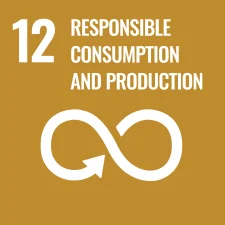
Goal 12
Ensure Sustainable Consumption and Production Patterns
Our manufacturing processes require the use of water for sanitation and operational functions. The Engineering Team works to optimize use of water to reduce consumption.

Goal 14
Conserve and Sustainably Use the Oceans, Seas, and Marine Resources
The Tillamook Bay is home to multiple underwater species that are vital to the area’s ecosystem. We are committed to protecting the waterways adjacent to our facilities.
Our 2019 Stewardship Report has been prepared in accordance with the GRI Standards: Core option.
Commitments to stewardship
